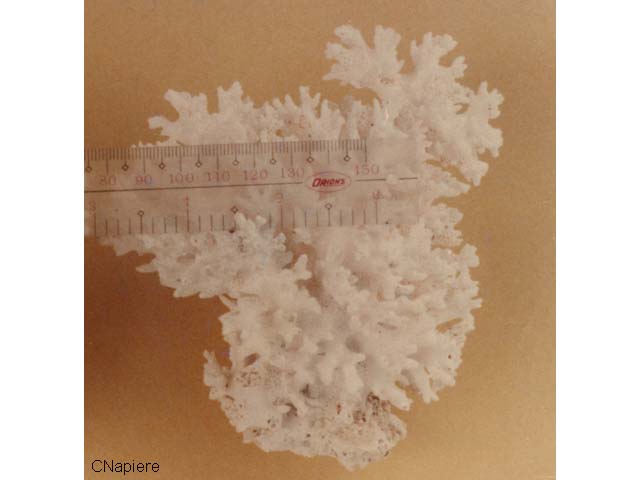| Pocilloporidae () |
| 30 cm DL (male/unsexed) |
|
reef-associated; marine; depth range 0 - 26 m |
| Indo-Pacific and Western Central Atlantic: East to Hawaii and Panama, south to Lord Howe Island, west to Red Sea, and north to Japan. |
|
Colonies: Ramose, covered with varrucae; corallites plocoid, less than 1 mm across, found both on varrucae and in between. Tendency of corallites to become cerioid near branch tips. Septa: poorly developed, in 2 cycles, may be reduced to a row to a row of spines. Peritheca: echinulate. Columella: Free. Thickness of branches may vary with exposure to water movement and depth. Colonies growing in shallow water or exposed to wave action: Have thick sturdy branches. Colonies from deep calm waters tend to have thin fragile branches. Color: Mottled brown in life. |
| Fisheries: Used directly as construction material, to make lime, used to make concrete, and to sell as curios; Live coral collected for aquarium trade; no report of direct consumption as food (Ref. 269). Maximum depth from Ref. 83917. |
|
(LC); Date assessed: 03 January 2008 Ref. 123251)
|
|
|
C: Ref. 83917. |
Source and more info: www.sealifebase.org. For personal, classroom, and other internal use only. Not for publication.

